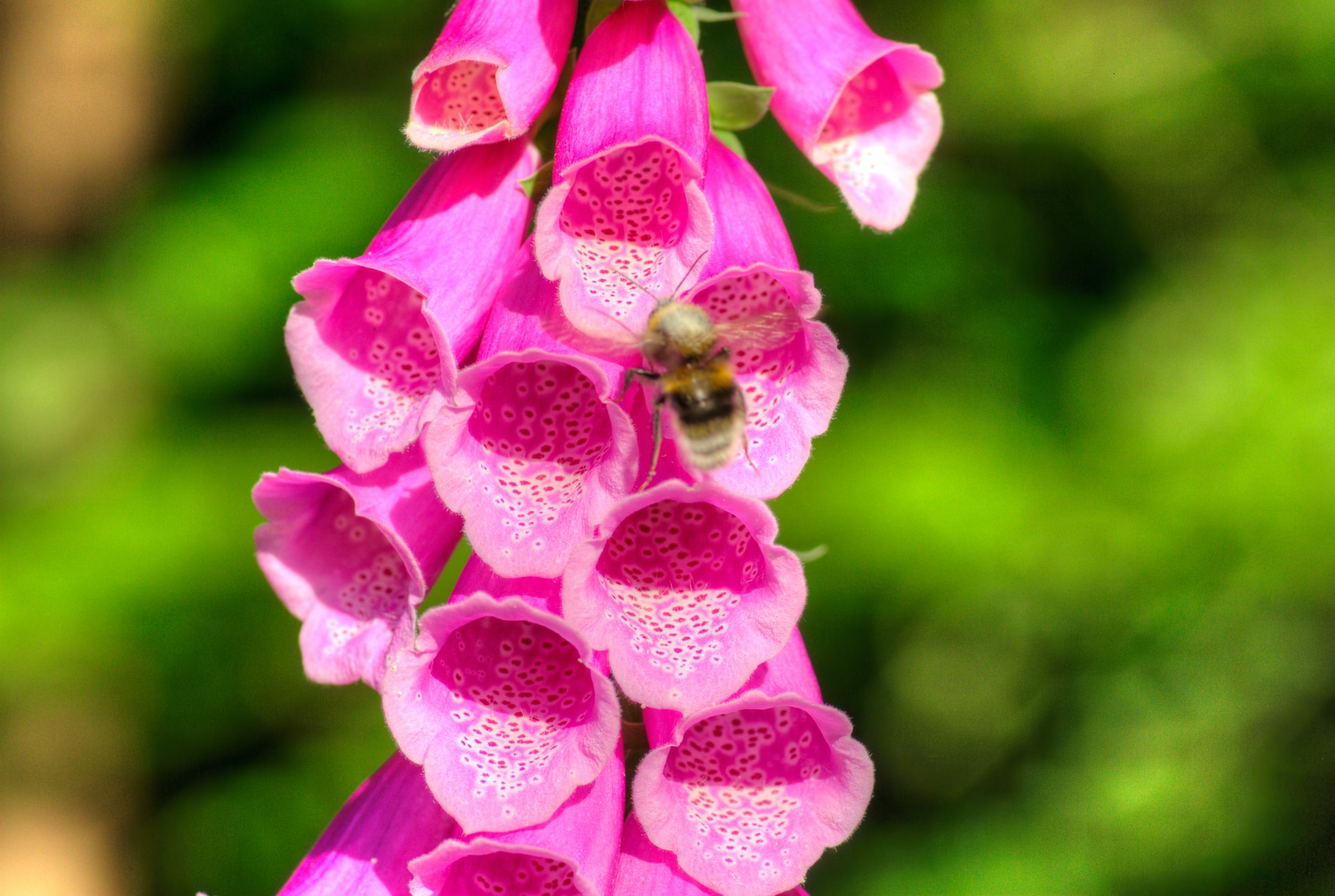Foxgloves are a beautiful purple flower. They look elegant, refined, and intimidating. It’s easy to assume that they’re difficult to grow or not a good fit, but don’t let intimidation stop you! Here are some tips for growing foxglove in your yard.
Do foxgloves come back every year?
Foxgloves are biennials, meaning they live for two years. During the first year, they grow their leaves. They put out flowers in their second year, after which they die. Foxgloves are self-seeding, though, so as long as you allow the flowers to dry on the stalk, they’ll drop seeds, and you’ll have more next year.

In order to have foxglove flowers every year, plant some additional foxgloves during the second year, when the first foxgloves are blooming. When the seeds from the first set are maturing, the flowers from the second set will be blooming.
Each foxglove plant produces many seeds, so as long as the seeds are allowed to fall, reseeding is not an issue. If you want to avoid self-seeding or want more control over how many foxgloves you have and where they grow, you can cut the flower spike off once the flowers begin to die, or collect the seed pods once they are dry. If the flower spike is cut off early during the season, the plant will occasionally produce a second one.
Are foxgloves easy to grow?
Foxgloves are easy to grow as long as you can keep the ground moist. If you live in an area that has significant droughts or heavy rain, foxgloves will be harder to keep alive outdoors. Moisture is the main concern, as foxgloves can tolerate most other conditions to an extent. Foxgloves can be kept indoors, if your climate makes it challenging to grow them outside, but be aware that foxgloves are toxic. If you have small children or pets that like to chew on plants, be sure your foxgloves are out of reach.
Do foxgloves prefer sun or shade?
In moderate climates, foxgloves prefer full sun with a little bit of afternoon shade. They need a little more shade in hotter climates and a little more sun in colder ones. Foxgloves generally like to be pleasantly warm. Being too hot or too cold can stress any plant, foxgloves included, so consider your climate and how much light your garden gets when planting foxglove.
If you plan on having an indoor foxglove, avoid putting it in a north-facing window, as these generally don’t get enough light. If your foxglove starts to look wilted, it may need more light. If it looks shriveled or crispy, it may be getting too much light. For colder, cloudier places, you may need to supplement sunlight with artificial light. There are a variety of products on the market, and they can be a great tool to have for indoor plants.
How long do foxgloves take to grow?
Foxglove seeds take 20 to 30 days to germinate. After they germinate, they sprout and put out leaves in a rosette pattern for the first year. During spring of the second year, you should see the beginnings of flowers, and the flowers should begin opening in early summer. If you’d like to get a slight jump on your foxgloves, you can start your seeds indoors. Starting seeds indoors can sometimes result in flowers in the first year, so if you’re in a rush, consider starting as early as December.
To start your seeds indoors, you’ll need a container of soil and some foxglove seeds. For an easier transition later, consider using soil from the area they’ll be transplanted into. The seeds need to be near or even on top of the soil, whether you’re starting them indoors or out. Make sure they get plenty of bright sun. This helps the seeds to grow, but it also keeps the soil warm, tricking the seeds into thinking it’s spring. Your seeds should be ready to transplant in later winter, 10 to 14 days before the last frost.
These beautiful flowers can brighten any garden or house with their array of purples, pinks, and creams. Although they’re poisonous, they’re remarkably easy to grow and care for. Now that you know these simple guidelines for taking care of your foxgloves, your garden can look dangerously good.




